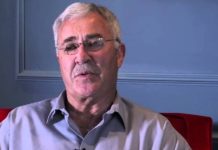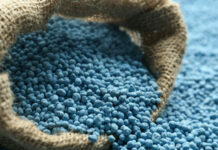
THE global vitamin and supplements industry is thriving. Estimates of its trajectory vary, but one is that vitamin sales will rise to $8.9bn in 2028 from $6.7bn now — an annual compound growth of 6%. According to the US’s Council for Responsible Nutrition, three-quarters of Americans use nutritional or dietary supplements. Vitamins D and C and zinc lead the pack.
The sector was given a push by the Covid pandemic, especially before a vaccine became available, as consumers desperately grasped at immunity. But the invisible driver behind the vitamin sector lies in the earth’s soil.
The UN says in a recent report that 40% of land in the world is degraded. It estimates there will be two billion more people on earth by 2050 and 15% less arable land per capita. The ultimate concern is of a food supply crisis.
In terms of psychologist Abraham Maslow’s hierarchy of needs model, food security is pretty much the No 1 priority, says Alzbeta Klein, CEO of the International Fertiliser Association. “If you can’t feed the world, nothing else matters. And to feed the world we need three critical micronutrients: nitrogen, potash and phosphates,” she says.
Unfortunately, nutrient production is not evenly distributed — as demonstrated by the effect of the 2022 invasion of Ukraine by Russia.
The two countries account for 30% of the world’s wheat and grain production. Potash is also concentrated in Russia. If its neighbour and ally, Belarus, is included in the calculation, roughly a third of world potash production has been affected by conflict-related sanctions, pushing up prices from below $300 a ton in 2020 to $700 a ton in 2023, says S&P Global.
The conflict has made for a paucity of supply, which, on top of population growth and soil degradation, is creating pressure on nutrient provision comparable with the search for minerals such as lithium and copper, which are critical for energy transformation. So says Tom McCulley, CEO of Crop Nutrients for Anglo American, developer of the Woodsmith polyhalite project on the Yorkshire coast in the UK.
Polyhalite (or Poly4, as Anglo now dubs it) is a little-known and little-used fertiliser. Anglo says the product doesn’t have the contaminating downside of traditional fertilisers such as muriate of potash, known as MOP. Poly4 can be blended with fertilisers that farmers are comfortable using.
But the polyhalite market is tiny. In its first phase Woodsmith will supply five million tons of Poly4 to a market of only 1Mt. That requires significant adoption by farmers and the displacement of established fertilisers such as MOP. That, says McCulley, will be driven by Anglo’s ongoing awareness campaign. The results of early tests with farmers have been favourable.
What compounds the emerging food supply crisis is that current fertiliser feedstocks are known to be energy inefficient. About 37% of greenhouse gases are caused by food production, says the New Scientist publication. Fertilisers are a culprit in this regard. They leak chloride into soils, making them less productive, an effect that is making its way to doctors’ surgeries. “Every time I go to the doctor I’m told to eat more fruit, more vegetables. It makes no sense.” Hence the concern about vitamins, McCulley says.
For all this, the Woodsmith project is having little traction among analysts. They worry about the project’s $4.8bn capital outlay having already caused a $1.8bn write-down in Anglo’s 2022 financial year. Richard Hatch, an analyst at Berenberg Bank, says: “The project is in full build-up mode, and we think, on a risk-adjusted basis, that risk lies marginally to the downside, mainly due to [matters of] project execution and capital expenditure confidence.
“Aside from this, the biggest risk is adoption rates of polyhalite by farmers.”
Investors have also been burnt by fertilisers before. BHP has spent billions of dollars attempting to bring its Jansen potash project in Canada to production. While Woodsmith is likely to receive a positive investment decision when Anglo’s board considers it, and is clearly not “going away”, it will “act as a dominant point of debate for the investment case, not always a positive one,” Hatch concludes.
“Will the mine beat its cost of capital?: No,” says HSBC analyst Shilan Modi in a report this month. Woodsmith would have to generate annual earnings of $425m in 2030 compared to the bank’s base case earnings of $230m, he says.
One institution that is warming to Woodsmith is Bank of America. Analysts say in a recent report that the market has probably been too harsh. Despite the layout, which approximates to $1bn a year, completing the project on time in 2027 and establishing a marketing foothold could generate enormous value. “The bottom line is that we think that, once built, Woodsmith could generate free cash flow of about $2bn a year, potentially worth $20bn-$25bn in market value.” That’s 60%-75% of Anglo’s market valuation.
Bank of America has confidence in McCulley, who developed Anglo’s previous major capital project, the $5.4bn Quellaveco mine in Peru. Anglo CEO Duncan Wanblad also oversaw this when he was head of the group’s copper business.









